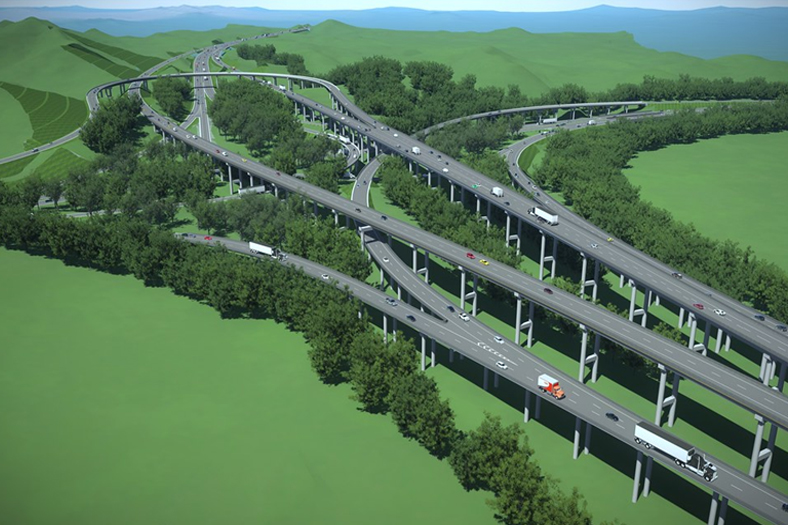BIM technology for expressway projects

The Lipu-Yulin Expressway will run through Guilin, Guigang and Yulin in Guangxi province and is an important section of G59, China’s national expressway network. The expressway design includes several technically-complex bridges such as the Xiangsizhou Bridge, with a span of 450 metres and the largest-span, cable-stayed bridge in Guangxi province, and the Pingnansan Bridge, the largest span-arch bridge in the world under construction, with a span of 575 metres. The expressway also includes super-long tunnels, such as the Wenwei Tunnel, which runs 4,705 metres and is located in mountainous regions with rough terrain and poor geological conditions.
The BIM design team was required to determine how to build a full-factor scenario project model quickly and optimise the route plan. The team depended on Bentley software to enable the design, collaboration and management across all teams while meeting contractual-scheduled requirements. Project goals include saving design time by 20 per cent, limiting deviation between target cost and actual cost to 2 per cent and achieving a profit margin of 5 per cent. The BIM team used unmanned aerial vehicles (UAVs) in combination with ContextCapture to create large-scale, reality meshes for the project. The models were used to perform 3D analysis to ensure the safety clearance of equipment and structures and conduct site planning and optimise construction site space utilisation to reach 95 per cent optimisation. Using OpenRoads, the team created 3D models for planning construction sites and temporary sites, arranging service areas and selecting spoil ground to avoid wasting land resources, which saved land use by 5 per cent and avoided 4,100 sq.m of building demolition.
Combining Bentley technology with BIM methodologies, the design team was able to achieve economic savings as well as reduce staff input of design and construction management by 10 per cent, which reduced resource hours by 30 per cent and greatly improved the quality of construction, laying the foundation for timely and high-quality project completion.
7
Cookie Consent
We use cookies to personalize your experience. By continuing to visit this website you agree to our Terms & Conditions, Privacy Policy and Cookie Policy.





